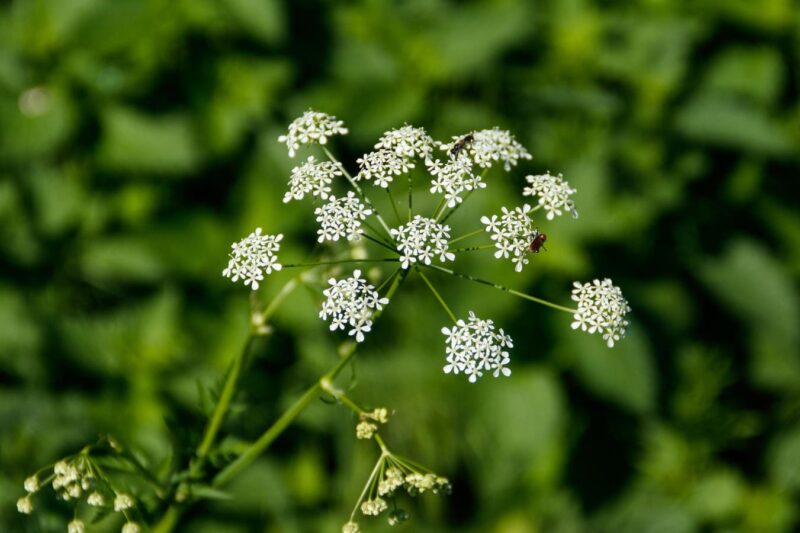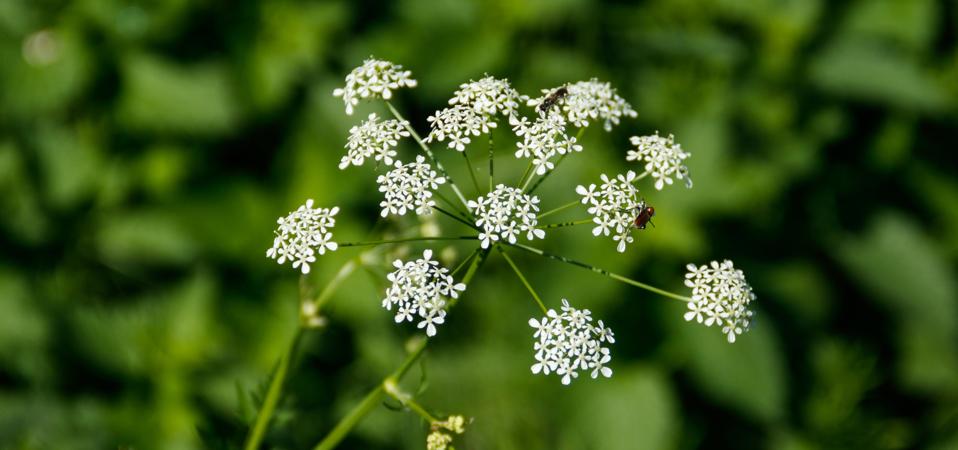Only a small fraction of all plants are edible. Some of those that aren’t can do serious damage to a human’s health. Here are ten plants to stay away from, and never ingest.
getty
The American landscape may look lush and inviting, but hidden among its meadows, gardens and forests are plants capable of causing serious harm. Some are beautiful ornamentals planted in front yards. Others are wild species growing unnoticed along trails or waterways.
Each carries potent natural toxins that have evolved as a defense against predators, including us.
Here are ten of the deadliest plants found in the United States, how to identify them and what makes them so dangerous.
1. Water Hemlock (Cicuta maculata)
An illustration of water hemlock, circa 1850
Getty Images
Often mistaken for wild parsnip or celery, water hemlock is among North America’s most poisonous plants. Every part contains cicutoxin, a neurotoxin that causes convulsions, respiratory failure and death – sometimes within hours. It grows in wet meadows and along stream banks across much of the country. Just a small bite of the root can be fatal.
2. Poison Hemlock (Conium maculatum)
The hemlock (Conium maculatum), poisonous plants in the ditch.
getty
Famous as the plant that killed Socrates, poison hemlock contains coniine and other alkaloids that paralyze the nervous system. It thrives along roadsides and fields and looks deceptively like harmless wild carrots. Symptoms begin with trembling and can progress to total paralysis and respiratory arrest if untreated.
3. Oleander (Nerium oleander)
Nerium oleander bush with pink flowers
getty
Oleander’s pink or white blossoms conceal one of nature’s most potent cardiac glycosides, oleandrin. Ingesting even a single leaf can cause irregular heartbeat, nausea, and death. Common in the southern U.S. and California, oleander is also toxic if burned.
4. Rosary Pea (Abrus precatorius)
Abrus precatorius also known as Jequirity Bean or Rosary Pea – seeds contain one of the most potent toxins.
getty
The bright red seeds of the rosary pea are often used in jewelry. But, inside each is abrin, a toxin several times more potent than ricin. A single chewed seed can kill an adult by shutting down organ function. It grows wild in Florida and other warm regions. Even handling broken seeds is risky.
5. Jimsonweed/Devil’s Trumpet (Datura stramonium)
Jimsonweed or Thorn Apple or Devil’s Snare or Devil’s Trumpet (Datura stramonium) flowering along the coastal route through Asturias near Playa del Silencio, Cudillero, Spain.
getty
Known for its large, trumpet-shaped flowers, jimsonweed contains atropine and scopolamine, hallucinogenic alkaloids that interfere with the central nervous system. Symptoms include delirium, heart irregularities and sometimes fatal respiratory failure. It grows in fields and vacant lots across the U.S., often mistaken for a harmless wildflower.
6. White Snakeroot (Ageratina altissima)
Ageratina altissima (white snakeroot).
getty
This seemingly innocent woodland plant indirectly caused countless deaths in early America. Cows that eat white snakeroot produce tremetol-tainted milk, leading to “milk sickness” in humans. One of its most famous victims was Nancy Hanks Lincoln, Abraham Lincoln’s mother, at least that is what’s speculated. It grows throughout the Midwest and eastern states.
7. Deadly Nightshade/Belladonna (Atropa belladonna)
Poisonings with the berries of belladonna take a leading position in the statistics of poison control centers in the context of plant poisonings. Of toxicological importance are the tropane alkaloids (S)-hyoscyamine, atropine, which is formed as a racemate of (S)- and (R)-hyoscyamine during drying or as a result of extraction, and scopolamine. Poisoning can be treated with gastric lavage within the first hour after ingestion of the poison. Medicinal charcoal may be administered in addition or alone. The specific antidote is physostigmine salicylate.
getty
Rare but infamous, deadly nightshade contains atropine and scopolamine, which can cause hallucinations, paralysis and death. Its shiny black berries are particularly deceptive, resembling cherries. Historically used as both a poison and cosmetic (with one application being to dilate pupils), it grows in shaded areas of the Northeast and Pacific Northwest.
8. Castor Bean (Ricinus communis)
This is a perennial flowering plant. The fruit is spiny greenish to reddish-purple capsule as seen in photo. The fruit contains poisonous seeds with brown mottling. The seed contains 40% to 60% oil. That is castor oil.
getty
The source of castor oil also produces ricin, one of the most lethal natural poisons known. Even a few crushed seeds can cause fatal organ failure within days. The plant’s spiky seed pods make it a popular ornamental in warm regions, but it should never be grown where children or pets can access it.
9. Foxglove (Digitalis purpurea)
Purple pink Digitalis purpurea, wild foxglove, in flower.
getty
Tall and elegant with purple bells, foxglove is a medicine as well as a poison. It contains digitalin, a cardiac glycoside used in heart medications. But, even small doses can cause fatal heart arrhythmias. Found in gardens and woodland edges, foxglove shows how the line between remedy and toxin can be razor thin.
10. Monkshood/Wolfsbane (Aconitum napellus)
Close-up image of violet high altitude wildflowers (Aconitum napellus) against a rocky background in the Cirque de Troumouse, Pyrenees National Park, France
getty
Nicknamed “the queen of poisons,” monkshood is laced with aconitine, a toxin that can enter the bloodstream through the skin. Within minutes it can cause numbness, cardiac arrest and death. Found in cooler mountain areas and gardens in the northern U.S., it’s dangerous to even handle without gloves.
How To Stay Safe Around Toxic Plants
While fatalities are rare, plant poisonings still occur every year. This mostly happens when people forage for wild foods or when children ingest colorful berries.
Here are some key precautions to keep in mind:
- Never eat wild plants unless you’re absolutely sure of their identity
- Teach children never to touch or taste unfamiliar berries, leaves or flowers
- Wear gloves when gardening or clearing brush
- Don’t burn plants you can’t identify as their smoke may carry toxins
- If exposure occurs, call Poison Control or go to the nearest emergency room immediately
The beauty of nature often hides powerful chemistry. Understanding these deadly species isn’t trivia, it’s a reminder of the respect the natural world calls for.
Are you an animal lover who owns a pet? Take the science-backed Pet Personality Test to know how well you know your little friend.









